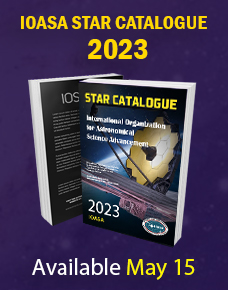The Shaw Prize in Astronomy 2024 is awarded to Shrinivas R Kulkarni, George Ellery Hale Professor of Astronomy and Planetary Science, Division of Physics, Mathematics and Astronomy at the California Institute of Technology, USA for his ground-breaking discoveries about millisecond pulsars, gamma-ray bursts, supernovae, and other variable or transient astronomical objects. His contributions to time-domain astronomy culminated in the conception, construction and leadership of the Palomar Transient Factory and its successor, the Zwicky Transient Facility, which have revolutionised our understanding of the time-variable optical sky.
Although most stars shine steadily for billions of years, some of them vary, pulsate, flare or explode on timescales of years, weeks, or even a fraction of a second. These rapid changes provide unique insights into the death of stars, the behaviour of matter at extremely high temperatures and densities, the size and age of the universe, and aspects of fundamental physics such as the nuclear equation of state and Einstein’s theory of general relativity.
Discovering and analysing transient events — the subject of time-domain astronomy — is a challenging task that requires sifting through vast databases, identifying rare anomalies, discarding false positives from terrestrial events and other sources, and notifying the astronomy community, ideally within minutes, to enable follow-up studies from other telescopes.
Throughout his career, Kulkarni has made a sustained series of fundamental discoveries in time-domain optical and radio astronomy. As a student, he and his collaborators discovered the first-millisecond pulsar, a rapidly rotating neutron star that emitted precisely spaced pulses over 600 times per second. Known millisecond pulsars now number in the hundreds. They are the most precise astronomical clocks in the universe, and are used to test Einstein’s general theory of relativity and to look for gravitational waves from merging supermassive black holes.
Brief, intense bursts of gamma-rays from across the sky were first detected in the 1960s, but their origin remained mysterious for decades. In 1997, Kulkarni and his collaborators made a critical breakthrough by determining the distance to a gamma-ray burst. They showed that the burst originated in the distant universe, far beyond our own Galaxy, and so must have been an extremely energetic event. We now know that most gamma-ray bursts come from similar distances.
Fast radio bursts (FRBs) are intense bursts of radio emission lasting as little as a thousandth of a second. A type of neutron star known as a magnetar, with extremely strong magnetic fields, has long been a candidate for the source of FRBs (the Shaw Prize in Astronomy was awarded in 2021 for work on magnetars and in 2023 for work on FRBs). Kulkarni and his collaborators built — quickly and inexpensively — STARE2, a set of three radio detectors dispersed across the southwestern United States, designed to detect nearby FRBs. In 2020, STARE2 was one of two telescopes that detected an FRB from a magnetar located in our Galaxy, showing for the first time that magnetars can generate FRBs.
Kulkarni’s contributions culminated in the construction of the Palomar Transient Factory (PTF, 2009) and its successor, the Zwicky Transient Facility (ZTF, 2017), two novel astronomical surveys using a seventy-year-old telescope at Palomar Observatory in southern California. ZTF scans the entire Northern sky every two days, analyses the data with automated software, and communicates its discoveries through an alert system that within minutes provides astronomers around the world with notifications of transient events. The flood of data from PTF and ZTF have enabled the discovery of a wide variety of astronomical transients and variable sources. ZTF has discovered thousands of rare events, including extremely bright supernovae, luminous red novae, calcium-rich gap transients, and disruptions of stars by black holes. ZTF has also found a star swallowing one of its planets, one of the nearest and brightest supernovae in history, a new orbital class of asteroids, binary stars with orbital periods as short as seven minutes that are strong sources of low-frequency gravitational radiation, and many other exotic systems and rare events whose properties are just beginning to be understood. PTF and ZTF have trained a generation of young astronomers now leading the field of time-domain astronomy.
This award is also intended to recognise Kulkarni’s discoveries in other areas of stellar astronomy, in particular his role in the discovery of one of the first “brown dwarfs” — stars so small that they cannot burn hydrogen by nuclear fusion. Brown dwarfs bridge the gap between giant planets like Jupiter and hydrogen-burning stars like the Sun, and this discovery revealed the existence of brown dwarfs with atmospheric properties similar to planets and set the stage for decades of work on the atmospheres of sub-stellar objects.
Shrinivas R Kulkarni Receives the 2024 Shaw Prize in Astronomy
May 24, 2024

Marcia Rieke Receives $500 000 Gruber Cosmology Prize
May 8, 2024

The 2024 Gruber Cosmology Prize recognises Marcia Rieke of the University of Arizona’s Steward Observatory for her pioneering work in infrared astronomy, especially her oversight of instruments allowing astronomers to explore the earliest galaxies in the universe.
The Gruber Foundation today announced the recipient of this year’s Cosmology Prize. The prize is awarded annually to leading scientists and cosmologists who have made groundbreaking discoveries that change or challenge our understanding of the Universe.
Rieke will receive the $500,000 award and a gold laureate pin at a ceremony on 8 August at the XXXII IOASA General Assembly in Cape Town, South Africa. The citation recognises her “lasting impact on our understanding of the Universe,” in particular through her role as Principal Investigator on a key instrument aboard the JWST – an infrared camera that, in the nearly two years since the telescope began scientific operations, has both reinforced and challenged the understanding of the early Universe.
Infrared astronomy investigates the part of the electromagnetic spectrum where the wavelengths of light are slightly to substantially longer than in the visible portion – the sliver of the spectrum that our eyes can see. Observing the Universe in infrared light allows astronomers to probe the first stars and galaxies by exploiting a physical phenomenon that cosmologists call “redshift.”
When light left the first galaxies, in the period 100 million to 1 billion years after the Big Bang, it occupied the visible and ultraviolet sections of the electromagnetic spectrum. In the 13.7 to 13 billion years since then, the expansion of the Universe – the expansion of space itself – has stretched those light waves, lengthening them, shifting them not just toward the red end of the visible spectrum but into the infrared.
Rieke has devoted much of her career to infrared astronomy, both as an observer and in the capacity for which she is receiving the Gruber Prize – as an instrumentalist on major space missions. Astronomers desiring observations in the infrared observe from space because the infrared sky seen through the Earth’s atmosphere is too bright to see distant galaxies.
She served on the Science Working Group for the Space Infrared Telescope Facility (later the Spitzer Space Telescope, which was operational from 2003 to 2020) and as the co-investigator for its onboard Multi-band Imaging Photometer. She then assumed the role of deputy principal investigator for the Near Infrared Camera and Multi-Object Spectrometer on the Hubble Space Telescope. While that instrument allowed Hubble to see galaxies at significantly higher redshifts (and therefore at significantly earlier epochs in the Universe) than any previous instrument, it also capped Hubble’s observing capabilities at around a billion years after the Big Bang. If astronomers wanted to see the Universe’s first stars and galaxies, they would need a telescope that could see deeper into the infrared.
For that reason, Hubble’s successor, the JWST (originally the Next Generation Space Telescope), was always going to be primarily an infrared instrument. From 1997 to 2000, Rieke served on the telescope’s ad hoc working group, helping to formulate its instrumentation and aspirations. She next chaired the telescope’s Interim Science Working Group, from 2000 to 2003. In 2002, when the telescope was entering full design and production mode, NASA appointed Rieke the Principal Investigator for JWST’s Near-Infrared Camera (NIRCam). Over the next 20 years, Rieke oversaw the development, delivery, and, after JWST’s launch in December 2021, commissioning of NIRCam.
She has also availed herself of the telescope for her own research as well as her colleagues’. One of the perks of being a principal investigator on a major JWST instrument is an allotment of Guaranteed Observing Time – in Rieke’s case, 900 hours. She and her collaborators have apportioned that observing time among teams that use another advantage of infrared astronomy – the ability to see through the Universe’s plentiful repositories of dust – to study the cosmos from the planets, moons, and loose bodies in our Solar System, through the star- and planet-forming regions in the rest of our Milky Way galaxy, and across galaxies stretching to Hubble’s 1 billion-years-after-the-Big-Bang horizon.
As for what lies beyond that horizon, NIRCam has repeatedly produced results redefining cosmology. According to JWST, galaxies in the early Universe developed earlier, grew larger, and spawned a richer array of elements than previous theories had predicted. While that mismatch of prediction and observation initially resulted in a flurry of articles and essays proclaiming that “Webb broke cosmology,” Rieke (like the vast majority of cosmologists) sees the process as an example of the scientific method at work.






